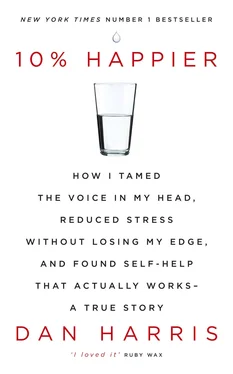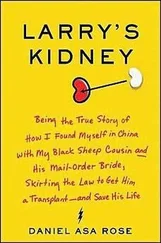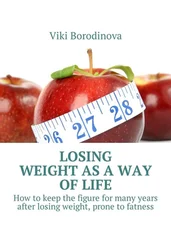I thought I’d achieved a front-row seat in the theater of my mind. He makes it clear that I really had loge seating. “As you continue your practice,” he says, “your NPMs—noticings per minute—will go way up.”
Then I tell him about the horrific jolt of restlessness from the night before last. Again, his response is: Nothing special. Happens all the time.
He is massively reassuring, though, on the inevitable vexations and vicissitudes of the practice. It is, he says, not unusual at all to go from bliss to misery within the space of an hour. He assures me that as I get more advanced, the ups and downs won’t be so jagged. I get up to leave, comforted by the knowledge that I am walking a well-trodden path. People have been doing this very practice for 2,500 years.
On my way to the door, he shouts after me and says I’m moving too fast. “You’re not being mindful enough,” he says. Like a sports coach, he exhorts me to up my game, to pay more attention as I do things like walk and open doors. “This is the stuff!”
I wonder: Is my growing reverence for Goldstein a form of Stockholm syndrome? Or is this person genuinely special? As I stand outside the office, soaking up the sunshine for a moment, the hummingbird reappears.
An hour or so later, in the morning question-and-answer period, a brassy redheaded woman in the front row asks the question that’s been nagging at me this whole time: “If enlightenment is real, where are all the enlightened people?”
It gets a good laugh, including from Goldstein, who promises that at tonight’s dharma talk he’s going to explain everything.
This I’m looking forward to. During the course of this retreat, he has repeatedly dropped words like “liberation,” “awakening,” and “realization.” But is this vaunted transformation actually achievable? If so, how? And what does it look like? In the Buddhist scriptures, people are getting enlightened left and right. They’re dropping like flies—even seven-year-olds. The Buddha had an entire lexicon to describe enlightenment: “the true,” “the beyond,” “the very hard to see,” “the wonderful,” “the marvelous,” “the island,” and more. All those words, and still I have no idea what he meant.
At seven o’clock, it’s time for the big show. We’re all assembled in the hall. Goldstein is finally going to explain enlightenment.
He starts by acknowledging that for “householders”—non-monks—the idea of an end to craving can seem unattainable. “Can we even imagine a mind free of craving? I think most of us resonate probably more closely with the famous prayer of Saint Augustine: ‘Dear Lord, make me chaste—but not yet.’ ”
There’s laughter, but then Goldstein launches into a dead-serious description of the various steps toward achieving the “unshakable deliverance of mind, the cessation of craving without remainder.” His description of the stages of enlightenment makes it sound like the most elaborate video game ever.
The process starts when the meditator becomes super-concentrated, when their NPMs reach epic velocity. It’s like my backbirdknee experience, only on steroids. You see things changing so quickly that nothing seems stable. The seemingly solid movie of the world breaks down to twenty-four frames per second. The universe is revealed to be a vast soup of causes and conditions.
From there, the path, as Goldstein describes it, involves moments of terror, periods of sublime bliss, pitfalls, trapdoors, and detours. At the end, the meditator arrives at the true goal of Buddhist meditation: to see that the “self” that we take to be the ridgepole of our lives is actually an illusion. The real superpower of meditation is not just to manage your ego more mindfully but to see that the ego itself has no actual substance. Close your eyes and look for it, and you won’t find any “self” you can put your finger on. So, for example, in my backbirdknee jag, if I were more enlightened, I would have been able to see that not only is reality not as monolithic as it appears, but also the “me,” who was noting all the arising objects, isn’t solid either. “The strong, deeply entrenched reference point of ‘I’ has been seen through,” says Goldstein from the front of the room. “That’s Nibbana.” The illusion of the self is, per the Buddhists, the wellspring of all our negative emotions—specifically, greed and hatred and confusion about “the nature of reality” (i.e., that we’re much more than our egos, that we are connected to the whole). Once the self is seen as unreal, these emotions are uprooted from the mind, and the meditator becomes “perfected.” The mind goes from a monkey to a gazelle.
Sounds awesome, I guess, but as he concludes, I realize that he hasn’t answered some of my most basic questions. If it’s so rare and hard to reach enlightenment, why bother trying? Is Goldstein himself enlightened? If not, on what basis does he believe in it? What do enlightened beings look like? Is Nirvana/Nibbana a magical state? A place? Once I’ve achieved selflessness, do I then just return to my everyday life, or do I no longer need to put my pants on in the morning?
The Buddhists clearly figured out a workable, practical system for defanging the voice in the head, but to add on top of that the promise of a magical transformation seems to me too cute by half. I buy the thesis that nothing in an unreliable, impermanent world can make you sustainably happy, but how will a quest for an enlightenment that almost no one can achieve do so either?
When the talk is over, in a minor act of rebellion, I walk down to the dining hall and binge mindlessly on rice cakes.
Day Nine
In the morning question-and-answer session, Goldstein redeems himself with a little humor. In exhorting us not to tune out during these closing hours of the retreat, he says, “They’re like the dessert. Just maybe not the dessert you ordered.”
As he presses his case, he says something that bugs me. He urges us not to spend too much time thinking about the stuff we have to do when the retreat is over. It’s a waste of time, he says; they’re just thoughts. This provokes me to raise my hand for the first time. From the back of the echoey hall, in full-on reporter mode, with my overloud voice apparently not atrophied one bit from disuse, I ask, “How can you advise us not to worry about the things we have to do when we reenter the world? If I miss my plane, that’s a genuine problem. These are not just irrelevant thoughts.”
Fair enough, he concedes. “But when you find yourself running through your trip to the airport for the seventeenth time, perhaps ask yourself the following question: ‘Is this useful’?”
His answer is so smart I involuntarily jolt back in my chair and smile.
“Is this useful?” It’s a simple, elegant corrective to my “price of security” motto. It’s okay to worry, plot, and plan, he’s saying—but only until it’s not useful anymore. I’ve spent the better part of my life trying to balance my penchant for maniacal overthinking with the desire for peace of mind. And here, with one little phrase, Goldstein has handed me what seems like a hugely constructive tool for taming this impulse without throwing the baby out with the bathwater.
Achieving choiceless awareness and metta-induced blubbering may have been the most dramatic moments of the retreat, but this is unquestionably the most valuable.
Day Ten
I awake to the smell of freedom.
Today is a half day. We do some meditation in the morning, and then we “break silence.” The zombies reanimate, transforming from the mindful walking dead back into normal human beings. You can almost see the color return to their cheeks.
Читать дальше












